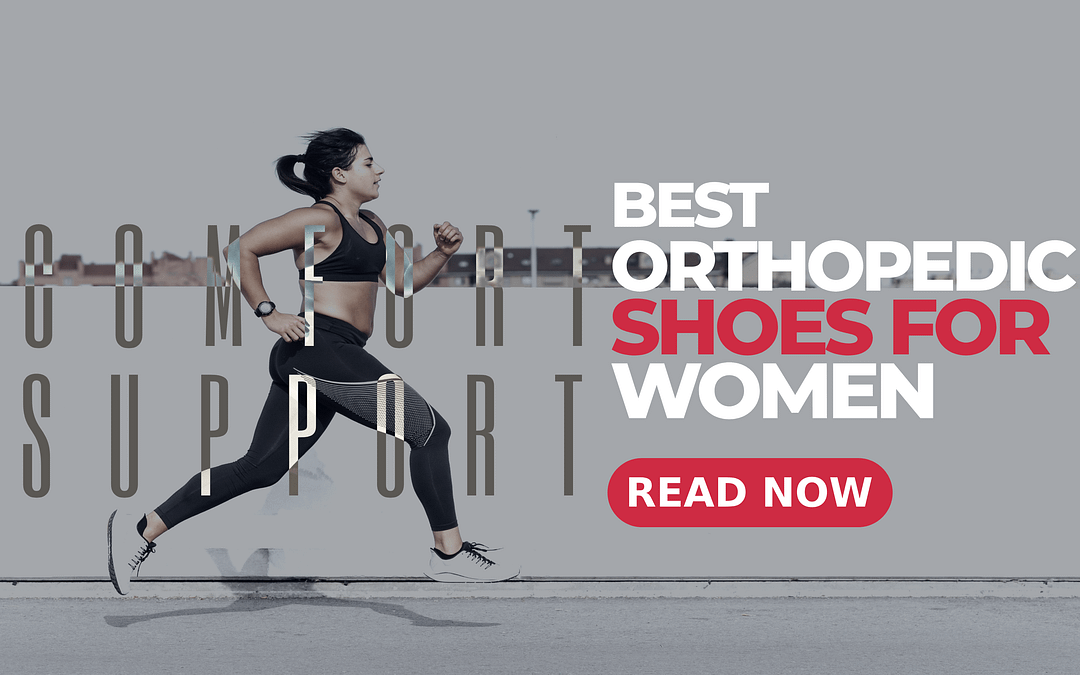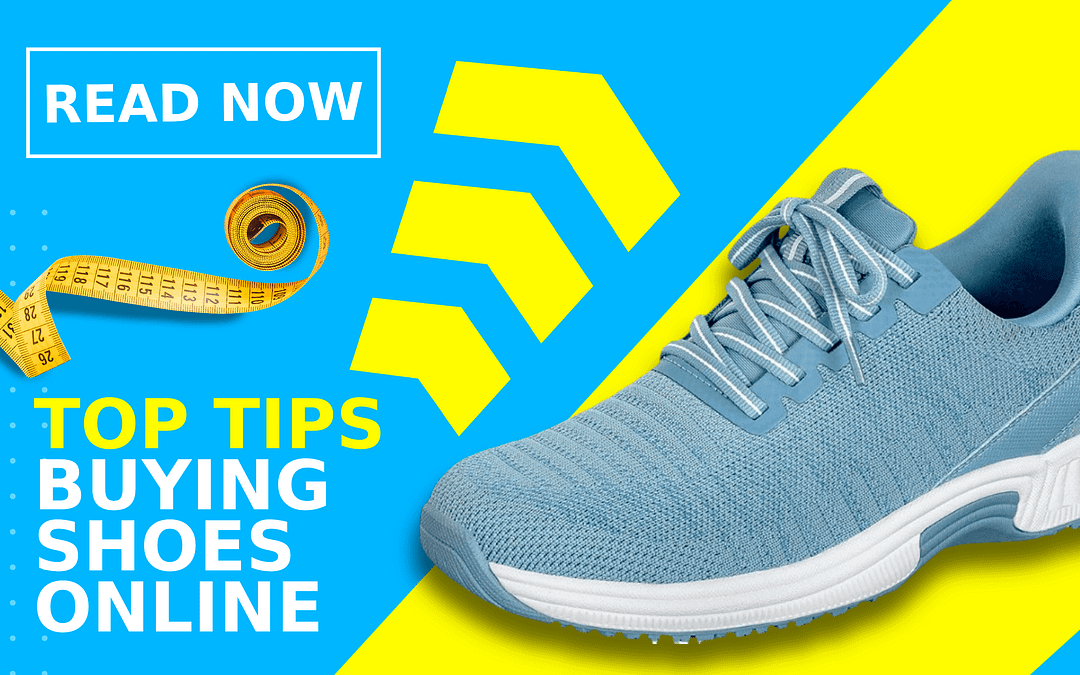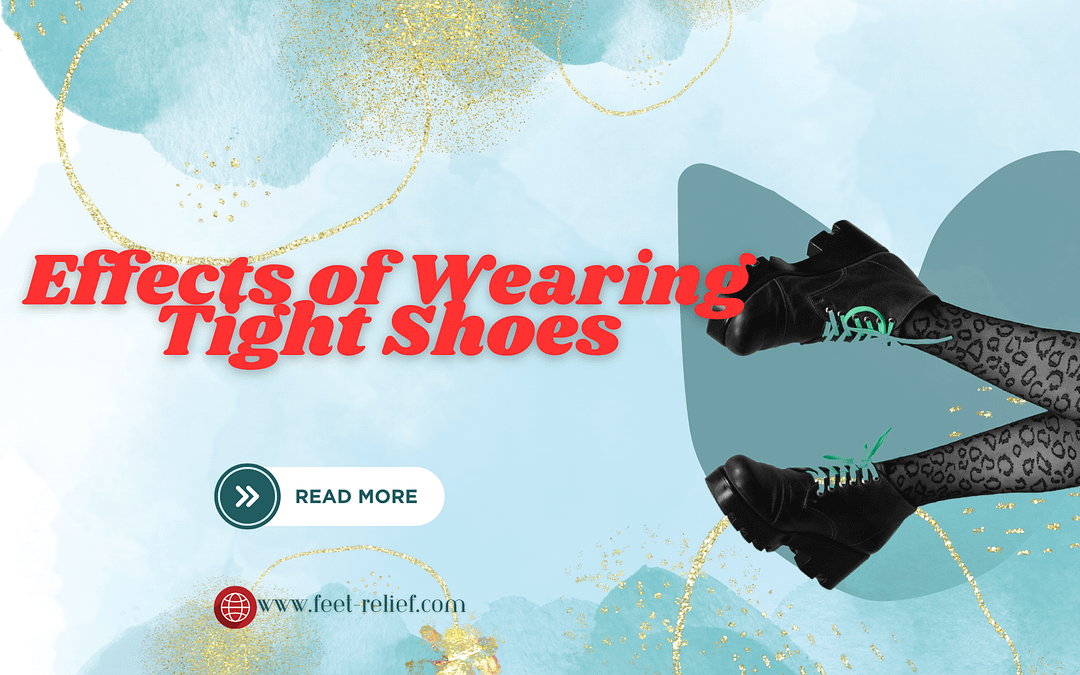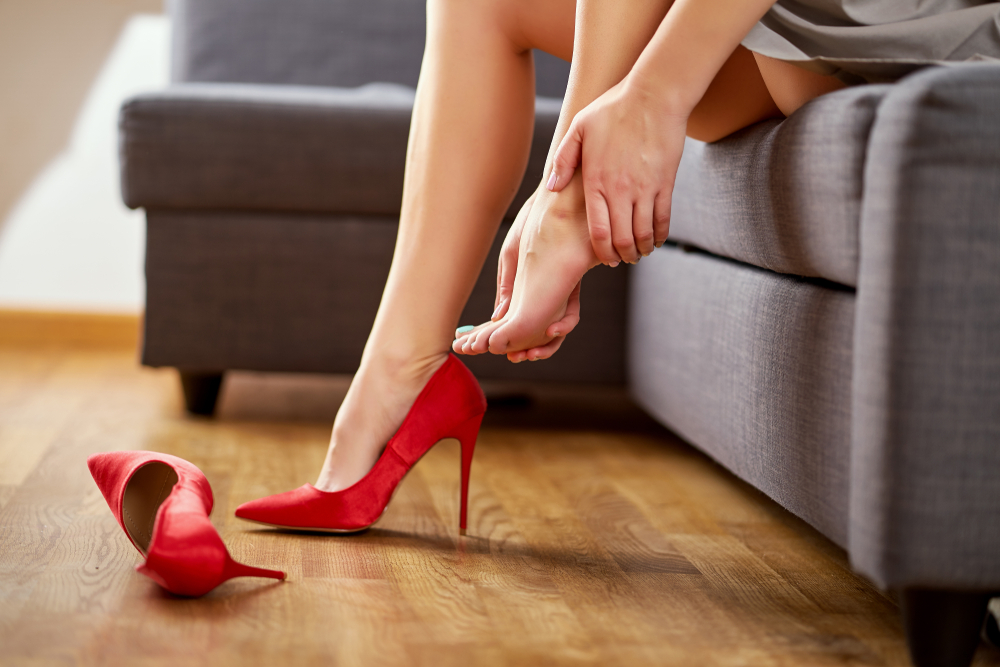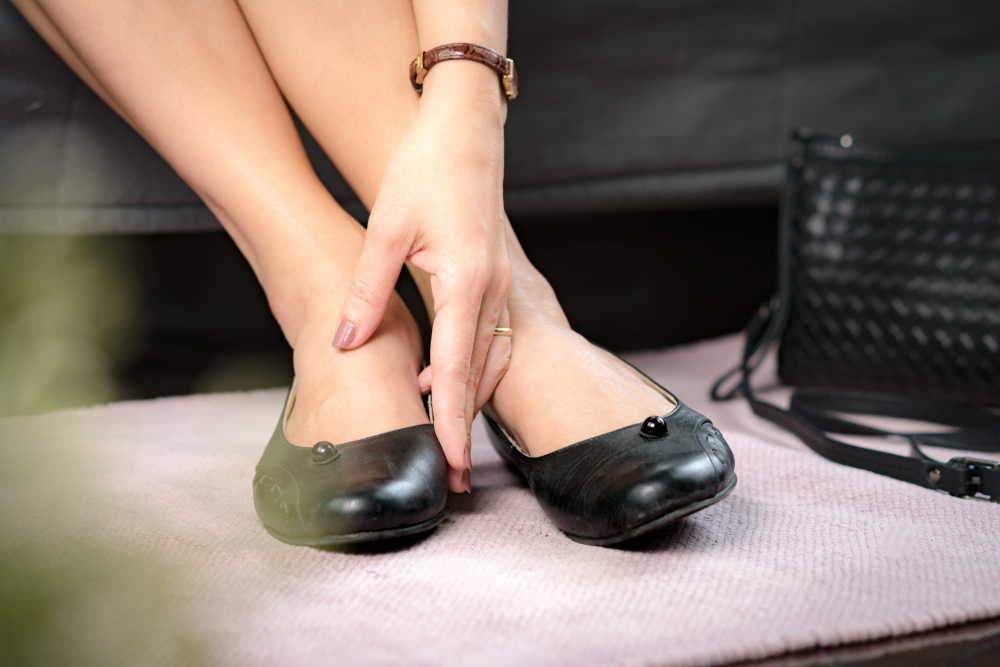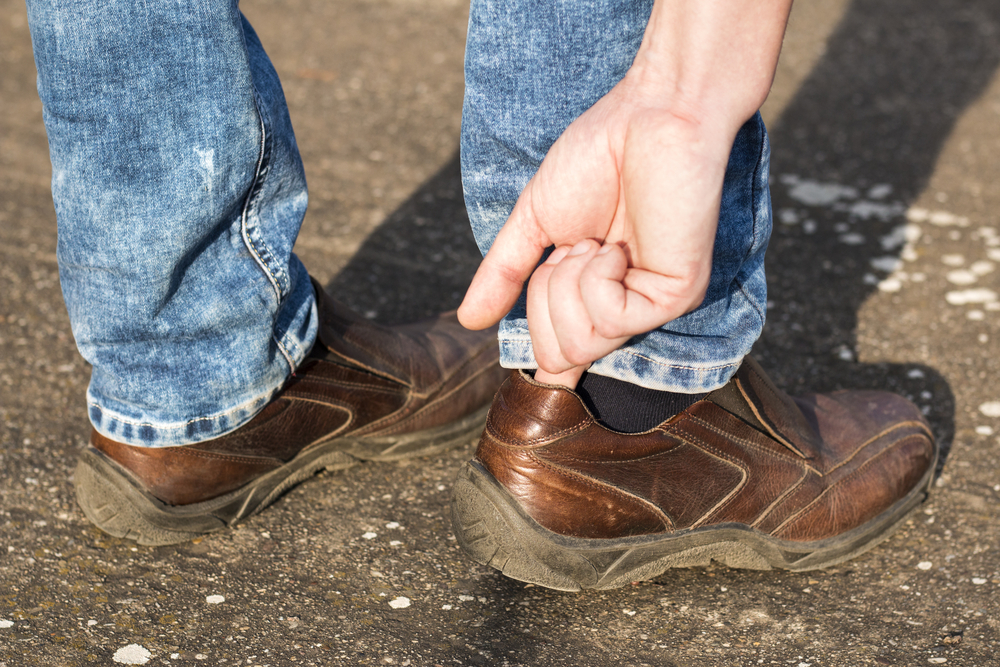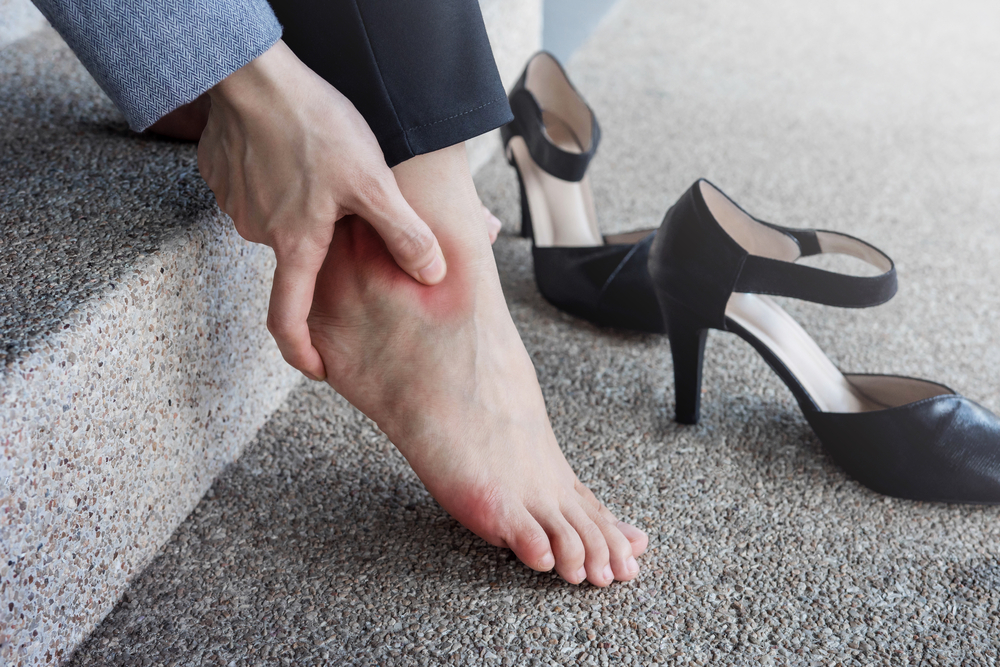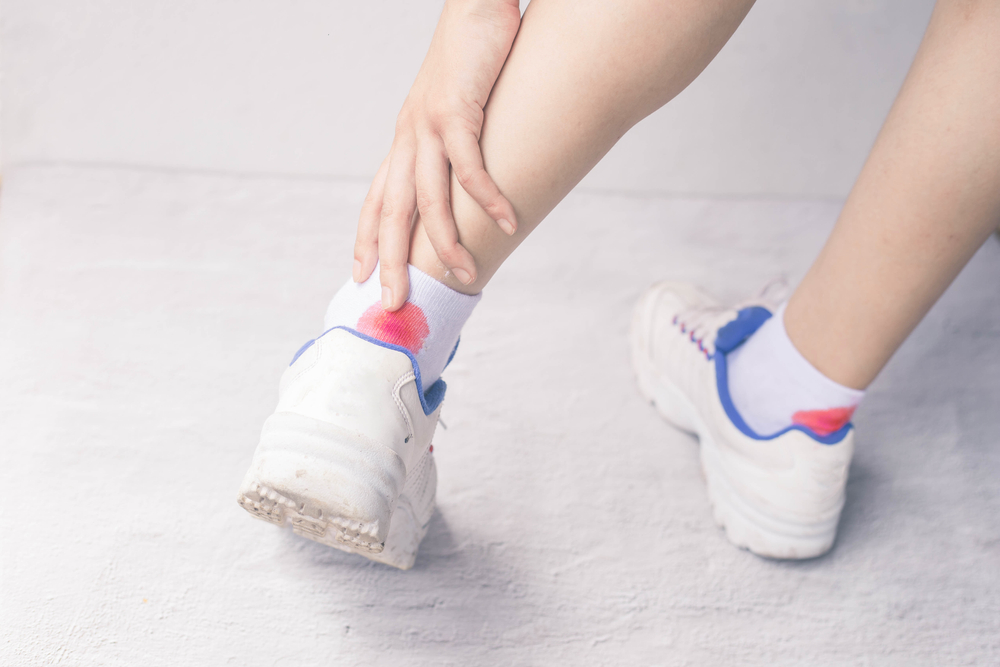
Top Comfortable Orthopedic Slippers with Support
Are you tired of aching feet after a long day? Do you struggle to find slippers that provide the support and comfort you need? Look no further! Orthopedic slippers are designed to address these issues and more, offering arch support, foot pain relief, and improved comfort compared to regular slippers. Let’s explore the world of orthopedic slippers and discover the perfect pair for you!
Key Takeaways
- Discover the benefits of orthopedic slippers for foot pain relief, improved comfort, and arch support.
- Check out our top picks for men’s and women’s styles with features like air holes, cushioning, and non-slip soles.
- Keep your feet comfy by regularly cleaning & replacing insoles every 6 months to a year.
Discovering the Benefits of Orthopedic Slippers
Orthopedic slippers are more than just a comfortable house slippers. They’re designed to provide arch support, help with foot pain, and make your feet feel at ease. No more struggling with slippers that slip off or don’t provide the support you need.
Orthopedic slippers, also known as comfortable house slippers, allow you to relish your home’s coziness while promoting foot health and comfort.
Arch Support
The significance of arch support in orthopedic slippers is immense. The arches in our feet play a crucial role in supporting our weight and distributing it across the bones in our feet. Arches act like springs, absorbing shock when we move, and ligaments and tendons hold them up.
Without proper arch support, we risk:
- Weak foot muscles
- Injuries
- Flatfoot deformity
- Circulation issues
- Inadequate shock absorption
Orthopedic slippers, with their supportive orthotic insoles, offer several benefits:
- Maintain foot alignment
- Provide arch support
- Enhance lower body alignment and stability
- Help with pain and dysfunction
- Improve posture and stability
- Help prevent falls
Wear orthopedic slippers to experience these benefits and improve your overall foot health.
In the end, arch support plays a pivotal role in preserving overall foot health and comfort.
Foot Pain Relief
Orthopedic slippers are effective in addressing foot pain resulting from diverse conditions like ankle pain, flat feet, bunions, edema, and plantar fasciitis. They offer arch support, shock absorption, and contoured footbeds, plus adjustable straps or closures for a secure and custom fit. The wider toe box offers extra room for any foot deformities or conditions, like bunions or hammertoes, and helps keep your feet properly aligned and weight distributed.
Offering proper support and cushioning, orthopedic slippers can significantly alleviate foot pain and provide relief for conditions such as plantar fasciitis, arthritis, and diabetic foot issues. You can alleviate foot pain and embrace a more comfortable, pain-free lifestyle with a suitable pair of orthopedic slippers.
Improved Comfort
Due to design features like molded footbeds, deep heel cups, and arch support, orthopedic slippers provide a superior level of comfort compared to regular slippers. These features help reduce foot pain and provide better stability and a relaxed, comfortable fit, so there are no pressure points on your feet.
Another significant feature of orthopedic slippers that contributes to their enhanced comfort is cushioning. The cushioning in orthopedic slippers absorbs and spreads pressure evenly, reducing the stress on certain parts of the foot and providing a cozy environment for your feet. So, when you slip into a pair of orthopedic slippers, it feels like your feet are getting a gentle hug.
Top Styles of Orthopedic Slippers for Men and Women
Orthopedic slippers are available in a wide array of styles suitable for both men and women, guaranteeing a perfect pair for all. Popular styles include clog slippers, slip-ons, and bootie styles, each offering its own unique benefits and features.
We’ll examine these top styles and identify their unique characteristics, ensuring you have the necessary access to make informed decisions.
Clog Slippers
Clog-style orthopedic slippers, appreciated for their convenience and user-friendly design, are a favored choice for many. They usually feature:
- Air holes
- Arch support
- A comfortable insole
- A sturdy build
- A slip-on style
Made of materials like suede, felt, and fur lining, these slippers provide the right balance of comfort and support, ensuring your feet feel great and well-supported as you move around your home.
Slip-Ons
Slip-on orthopedic slippers prioritize convenience and support. Designed for easy wear, these slippers typically feature increased arch support, various shapes and styles to suit your preferences, and a lightweight, versatile design. The ease of slipping them on and off makes them an attractive option for those seeking both comfort and functionality.
The benefits of slip-on orthopedic slippers include the following:
- Arch support
- Deep heel cup
- Cushioning in the ball of the foot
- Improved overall posture
By offering these features, slip-on orthopedic slippers help maintain neutral alignment of the foot, reduce pressure on the heel and ball of the foot, and ensure your feet feel comfortable and well-supported throughout the day.
Bootie Style
Bootie-style orthopedic slippers are excellent for individuals seeking extra warmth and support. These slippers feature a high-top design that covers the entire foot and ankle, providing extra warmth and protection while also offering a snug and secure fit.
With orthopedic features like arch support and cushioning, bootie-style slippers are a go-to choice for those looking for comfort and relief.
Key Features to Look for in Orthopedic Slippers
While shopping for orthopedic slippers, consider some key features to ensure you select the right pair for your needs. Look for slippers with built-in arch support, soft cushioning, and non-slip soles. These features will provide you with the support, comfort, and safety you need to maintain optimal foot health and enjoy your time at home.
Built-in Arch Support
Built-in arch support is necessary for maintaining overall foot health and comfort. It helps:
- Keep your feet in the right position
- Promote better stability
- Reduce foot pain
- Improve blood flow
By distributing pressure more evenly, built-in arch support takes some of the pressure off the heel and ball of the feet and transfers it to the arch instead.
Orthopedic slippers with built-in arch support are designed to provide the right support and alignment for your feet. Worn-out insoles can cause discomfort, uneven wear on your shoes, and lack of adequate support. Therefore, choosing orthopedic slippers with built-in arch support ensures you get the right support and avoid foot pain or damage.
Soft Cushioning
Soft cushioning in orthopedic slippers is a key feature, providing comfort and support for your feet. It helps reduce pressure on certain areas of the foot, preventing painful pressure points and providing a comfortable environment for your feet.
The benefits of orthopedic slippers include:
- Cushioning that absorbs and spreads pressure evenly, reducing stress on certain parts of the foot
- Providing a cozy environment for your feet
- Feeling like your feet are getting a gentle hug when you slip into a pair of orthopedic slippers.
Non-Slip Soles
Consider safety and stability as important factors while choosing orthopedic slippers. Non-slip soles provide extra traction and a firmer grip, ensuring you don’t slip and fall, especially on wet or slippery surfaces. This is particularly important for orthopedic patients who may have reduced stability and balance.
By choosing orthopedic slippers with non-slip soles, you can enjoy the comfort and support you need while staying safe and steady on your feet.
Finding the Right Fit: Sizing and Width Considerations
Finding the correct fit for your orthopedic slippers is necessary for optimal foot health and comfort. This includes understanding shoe widths, measuring your feet accurately, and picking out the orthotic slippers that best suit your needs.
We’ll examine these aspects in greater detail to assist you in finding the ideal pair of orthopedic slippers for your feet.
Understanding Shoe Widths
Different shoe widths play a significant role in finding the right fit for orthopedic slippers. Orthopedic slippers typically come in wider widths than regular shoes, with some brands offering more narrow sizes as well. Getting the right width ensures a great fit and comfort for people with certain foot conditions or orthopedic requirements.
For men, shoe width sizes include A (narrow), B (medium), C/D (wide), and E (extra wide). For women, shoe width sizes include A (narrow), B (medium), C/D (wide), and E (extra wide). Knowing the right width helps you find the best size and fit for ultimate comfort and support.
Measuring Your Feet
Precise measurement of your feet is necessary to find the correct fit for your orthopedic slippers. Follow these steps to measure your feet:
- Place a piece of paper on the floor and stand on it.
- Trace the outline of your foot with a pen or pencil.
- Measure the length from the heel to the longest toe.
- Measure the width at the widest part of your foot.
- Do the same for the other foot.
- Use the measurements to determine your shoe size according to the sizing chart provided by the orthopedic slipper manufacturer.
Remember to measure your feet in the evening when they’re at their largest, as feet tend to swell up during the day.
Tips for Choosing Orthotic Slippers
When choosing the best orthotic slippers, consider factors like:
- The durability of the soles
- Stability grip
- The spaciousness and comfort of the slippers
- The fit in terms of length and width
- Slippers that follow the shape of your foot
- Slippers that provide the right stiffness and flexibility
By considering these factors, you’ll be well on your way to finding the perfect pair of orthopedic slippers for your feet.
Why We Prefer OrthoFeet Slippers and Shoes
OrthoFeet slippers and shoes distinguish themselves from other brands with the following features:
- Extra-depth
- Adjustable features
- Soft interior linings
- Premium orthotic insoles with arch support
OrthoFeet’s biomechanical design prioritizes comfort, making their slippers and shoes a top choice for those seeking orthopedic footwear that provides support, pain relief, and a comfortable fit for their toes.
We strongly suggest trying OrthoFeet slippers and shoes for their outstanding quality and comfort.
Our Top Picks: Recommended Orthopedic Slippers for Different Needs
To assist you in finding the ideal pair of orthopedic slippers, we have compiled our top recommendations for various needs, including the best overall, the best for plantar fasciitis, and the best for flat feet. Let’s take a look at these top picks and what makes them stand out from the rest.
Best Overall, Orthofeet Lorin Hands-Free
Our top pick for the best overall orthopedic slipper is the Orthofeet Lorin Hands-Free. This slipper offers a super soft and fluffy feel, indoor/outdoor soles, and the ability to be worn hands-free.
With its impressive combination of comfort, support, and versatility, the Orthofeet Lorin Hands-Free is an excellent choice for anyone seeking the perfect pair of orthopedic slippers.
Best for Plantar Fasciitis
For those suffering from plantar fasciitis, we recommend the following slippers:
- Kuru Draft
- Isotoner Terry Hoodback Clog Slippers
- Vionic Relax Slipper
- Orthofeet Charlotte Slippers
- Vionic Carlin Slipper
- Topo Athletic slippers
These slippers offer great arch support and cushioning to help alleviate the pain and discomfort associated with plantar fasciitis, making them the ideal choice for individuals suffering from this condition.
Best for Flat Feet
For individuals with flat feet, our top recommendations include:
- Vionic Relax Slipper
- Vionic Gemma Mule Slipper
- OOFOS OOcoozie Mule
- Ugg Cozy Slipper
- FitFlop Chrissie II
- Vionic Carlin Slipper
- Birkenstock Zermatt
- Adidas Puremotion Adapt slippers.
These slippers provide the necessary support and comfort for people with flat feet, ensuring a perfect fit and a pain-free experience.
Caring for Your Orthopedic Slippers
Appropriate care and maintenance of your orthopedic slippers are crucial to extend their longevity and ensure they continue to provide optimal support and comfort. In this section, we’ll cover cleaning and maintenance tips, replacing insoles, and knowing when to replace your slippers for optimal foot health.
Cleaning and Maintenance
Regular cleaning and maintenance can help maintain the good condition of your orthopedic slippers and extend their lifespan. Here are some steps to clean your slippers:
- Use a damp rag, baby wipes, or makeup remover wipes to wipe down the soles.
- You can use soapy water, methylated spirits, or baking soda for the insoles. Wipe them down with a damp cloth.
- Let your slippers air dry properly before wearing them again.
Cleaning your orthopedic slippers regularly, such as once a week or whenever they need it, can help prevent fungal and bacterial infections. Additionally, using insoles or heel liners to fill up any extra space in the shoe and provide a snug fit can help maintain the shape of your slippers.
Replacing Insoles
Insoles play a significant role in providing support and comfort in your orthopedic slippers. Worn-out insoles can cause discomfort, uneven wear on your shoes, and lack of adequate support. It’s generally recommended to replace your insoles every 6 months to a year, depending on how much you use your slippers and how well you take care of them.
By replacing worn-out insoles, you can ensure continued support and comfort for your feet.
When to Replace Your Slippers
Recognizing when to replace your orthopedic slippers is crucial for maintaining optimal foot health. Typical signs of wear and tear on orthopedic slippers include:
- Holes or tears in the fabric
- Flattened-out soles
- Worn-out heels
- Misalignment or uneven wear pattern
Orthopedic slippers should usually be replaced every 1 to 3 years, depending on your usage and care. By replacing your slippers when needed, you can ensure continued support and comfort for your feet.
Credits: Kintec: Footwear + Orthotics
Wrapping It Up
Orthopedic slippers offer an excellent solution for individuals seeking comfortable and supportive footwear to wear at home. With their built-in arch support, cushioning, and various styles, orthopedic slippers cater to different needs and preferences. By finding the perfect fit, caring for your slippers properly, and choosing the right pair for your specific needs, you can enjoy the comfort and support of orthopedic slippers and keep your feet healthy and happy.
Frequently Asked Questions
Which slippers are best for foot pain?
The Nlissope Orthopedic Slippers are a great option for foot pain, with arch support and orthotic insoles to realign the foot and provide maximum comfort. They also feature a wide-toe box and adjustable strap for a tailored fit. If you’re looking for something extra cozy, the Orthofeet Charlotte Slippers are a great choice.
What is an orthopedic slipper?
Orthopedic slippers are specially designed footwear that provide comfort, support, and relief for individuals with foot and lower limb conditions. These shoes have molded footbeds and deep heel cups that provide arch support and can help with moderate foot pain management.
What are the best orthopedic slippers?
The best orthopedic slippers include the Vionic Gemma Mule Slippers for overall comfort, Oofos Ooriginal Sandal for sweaty feet, Dearfoams Fireside Shearling Slippers for luxurious feel, Orthofeet Charlotte Slippers for plantar fasciitis and Vionic Carlin Slipper for flat feet.
What are the benefits of orthopedic slippers?
Orthopedic slippers provide arch support, help relieve foot pain, and improve comfort compared to regular slippers, making them a great choice for those with aching feet.
What are some popular styles of orthopedic slippers?
Popular orthopedic slippers include clog, slip-on, and bootie styles for easy wearing and comfort.
Learn What’s Best For Your Feet!
Learn what’s best for your feet with us! We offer an array of tips and tricks for foot care and relief.
For a deeper dive into foot health, visit our website: feet-relief.com.
Your journey towards happy, healthy feet starts here!
Read More

















